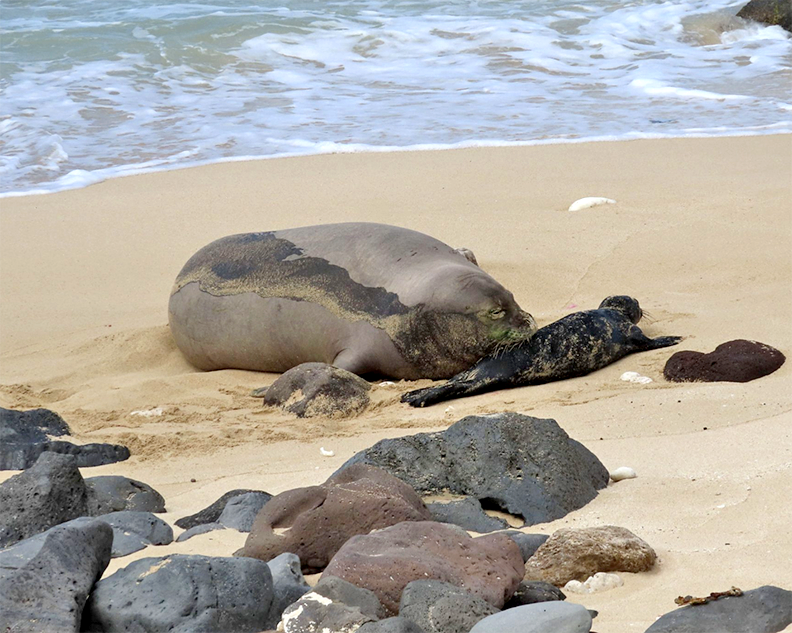 Photo and story by Jan TenBruggencate
Photo and story by Jan TenBruggencate
In our age of headlong electronic wizardry, there is no better sign of our disrespect for the past than an abandoned graveyard.
Kaua`i is littered with them.
Leaning stones and weathering slabs on cracked foundations, lost in weeds, lifted over the decades by the roots of untended trees.
What does it say about us that we lovingly inter our loved ones with great ceremony, and then walk away, seldom to return.
I spent time in one old cemetery recently, so overgrown that a visitor standing fifteen feet away asked me, “Where is the cemetery?”
I walked through the weeds and tall grass among the stones and rotting wooden crosses. Such diversity. There were professional marble slabs and plain basalt upright slabs. And rough concrete crosses, into which the names and dates had been scratched when the mud was wet. . And here, a welded, galvanized cross.
There were memorials that were works of art. Bas-relief shapes carefully carved into native stone, along with lettering in Japanese characters—lithic calligraphy.
There were little plastic disks set into gravestones that had once held photographs of the deceased.
I saw a classic marble cross on a concrete rectangle, but the concrete was lifted and cracked, its back broken by the moving earth.
A moss-rock crypt’s mortar was failing and its stones were spilling out on to the red dirt.
The names on the graves were the history of our island. Hawaiian and Filipino and Portuguese and Irish and Chinese and Japanese and English and German and so many graves with no recognizable names remaining at all.
The memorials were overgrown with dry grass and weeds, and feral ironwoods amid the aged dying trees that had originally shaded this graveyard.
This particular resting place had been carefully selected with a view of the ocean. An ocean many of the cemetery’s residents had crossed to reach these islands. Many of the still visible stones had birthdates that reached back into the middle of the 1800s. The ones that weren’t Hawaiian were most likely first-generation residents of Kaua`i.
They built this community, and yet here they are, forgotten.
Although, not entirely abandoned. Here and there in the weeds are paths, worn by faithful feet.
A very few graves show signs of care.
There were cloth leis and fabric flowers. Some were old and faded, but a few more recent. The resident of one grave without a name was remembered with bright pink imitation carnations.
I found a grave with a couple of cans of light beer and bottles of water.
At one stone, there was a collection of old mayonnaise bottles. Someone had regularly brought flowers in water. But nobody had visited that grave for years. The bottles were old and cloudy. Perhaps the survivors had themselves died, and been buried somewhere else.
And at one grave, on the Sunday on which I visited, there were roses.
Fresh roses, left that very day.
Discover more from ForKauaiOnline
Subscribe to get the latest posts sent to your email.




Leave a Reply